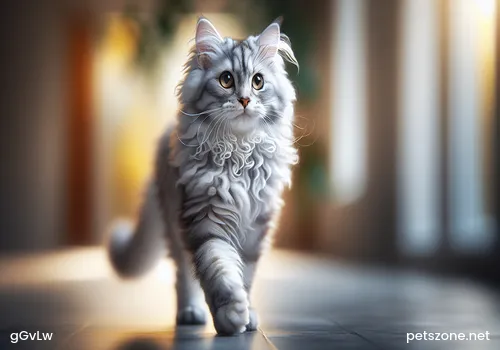Correct Stimulation Methods Needed for Training Cats

Tabby Cat
We know that compared to dogs, training cats is much more difficult. But this does not mean cats are less intelligent; on the contrary, cats are very clever, it is just their temperament that makes them less easy to domesticate. Most cats are naturally aloof and not easy to approach, even towards their owners they often show a proud attitude. Therefore, to train cats, appropriate stimulation methods must be used, which might achieve more significant results.
Cats are intelligent but mostly enjoy solitude. They have strong curiosity and are highly interested in insects, yarn balls, ropes, paper balls, and leaves blown by the wind. Normally, when teased by their owners, cats can instinctively perform various interesting movements like rolling over, lying on their backs with limbs in the air, or standing upright.
However, training cats to perform more complex actions is much more difficult than dogs. This is because cats have strong independence and an extremely stubborn nature, unwilling to be controlled. If a cat likes something, the owner cannot prevent it from doing so, and if the cat does not like something, forcing it often meets with resistance. Additionally, cats are naturally alert and easily frightened by bright lights and crowds, making it harder to perform in public.
With patience and scientific methods, cats can still be properly trained and disciplined in relatively short periods. All behavior in cats is based physiologically on neural reflexes. Reflex activities refer to processes whereby sensors in the body receive certain stimuli, and through neural system activity, cause the body to respond. The occurrence of reflex activities requires stimuli. Stimuli refer to factors that body tissues and cells can perceive and that can trigger specific responses—internal and external environmental factors in flux such as tapping, pressing, light, sound, temperature, etc. Cats have various sensitive receptors such as visual, auditory, olfactory, and various temperature, pain, and touch receptors in the skin. These can detect different stimuli and convert them into neural excitation processes. When excitation travels along afferent nerves to the brain, the brain immediately reacts and sends commands through efferent nerves to effectors to carry out corresponding actions.
Animal reflexes can be divided into unconditioned reflexes and conditioned reflexes. Unconditioned reflexes are innate, congenital reflexes essential for maintaining life, such as a kitten's natural ability to nurse and breathe after birth. Stimuli that trigger unconditioned reflexes are called unconditioned stimuli, such as food, touch, or tapping. Conditioned reflexes are neural reflex activities gradually formed after birth during adaptation to the environment. These acquired reflexes ensure a high level of balance between the animal’s body and its surroundings. They include habits formed during husbandry and abilities developed through training, belonging to individual-specific reflex activities.



